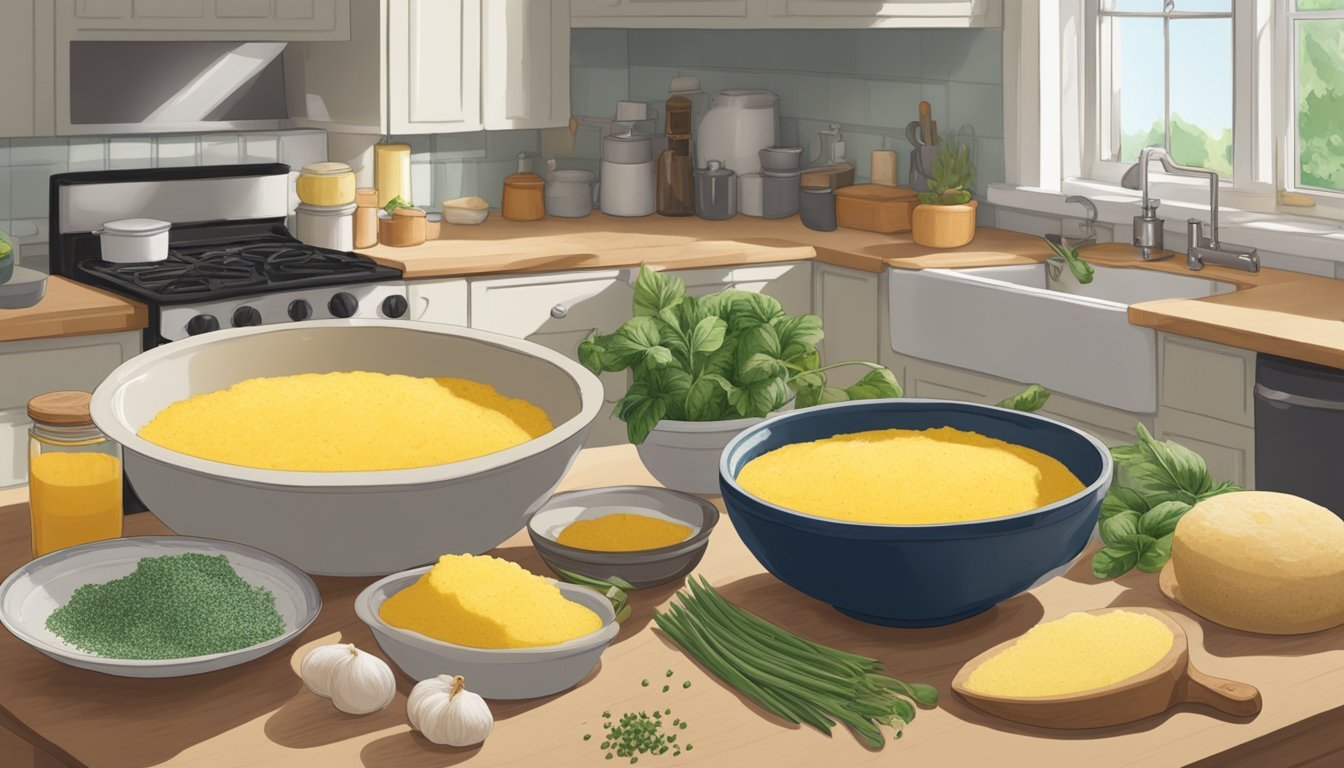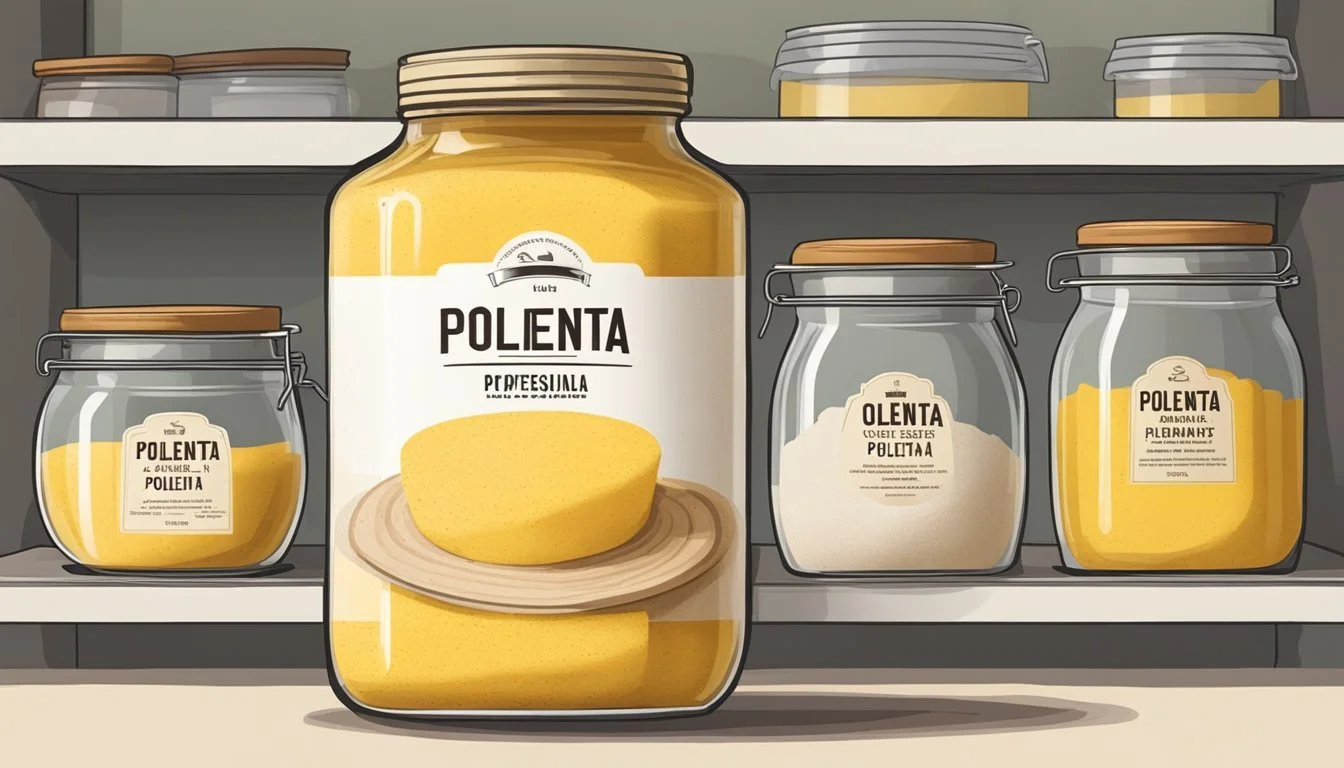Does Polenta Go Bad?
Shelf Life and Storage Tips
Polenta, a versatile dish made from cornmeal, raises a common question among home cooks: yes, polenta can go bad. If stored improperly, the fats in polenta can become rancid, similar to how flour spoils. Proper storage is essential to prolong its shelf life and maintain its quality.
Cooked polenta should be refrigerated within two hours of cooking. When stored in an airtight container and kept in a cool, dry place, uncooked polenta can last significantly longer. Regular monitoring for changes in odor, texture, or appearance is crucial to ensure safety and quality.
Refrigerated cooked polenta usually lasts for 5-7 days. By following proper storage guidelines, you can enjoy this delicious staple while minimizing the risk of consuming spoiled food.
Understanding Polenta
Polenta is a dish made from ground cornmeal. It has roots in Roman times and is a staple in northern Italian cuisine. Historically, it evolved from a simple porridge into a versatile ingredient cherished in many homes and restaurants.
Cornmeal is the primary component of polenta. When cooked, polenta develops a rich, creamy texture, which can be served in various forms. It can be soft and mushy, firm and grilled, or sliced and fried.
There are several types of polenta, including instant polenta. Instant polenta is pre-cooked and dried, allowing quicker preparation. Traditional polenta, by contrast, requires longer cooking times to achieve the desired consistency.
Polenta can be likened to similar foods such as grits, quinoa, rice, and pasta. However, one distinct feature is that polenta is naturally gluten-free, making it an excellent alternative for those with gluten sensitivities.
Textures and Forms
Creamy Texture: Cooked slowly with water or stock, frequently stirred.
Firm Polenta: Left to set and then grilled, baked, or fried.
Soft Polenta: Kept wet and buttery, perfect as a side dish.
Storage and Use
Store polenta in a cool, dry place. Cooked polenta should be kept in an airtight container, with paper towels absorbing excess moisture for freshness. Reheating it on the stovetop with a bit of liquid helps retain its moisture and flavor.
Polenta's versatility shines in its ability to absorb flavors, making it a key component in many recipes.
Polenta Preparation
Polenta, made from cornmeal, can be prepared in various ways to suit different tastes and meals. It can be cooked on the stovetop and served as a creamy dish or prepared into slices for frying, grilling, or baking.
Cooking Basics
Polenta begins with a base of cornmeal and water or broth, maintaining a ratio of 4:1 liquid to cornmeal for a smooth consistency. It is essential to bring the liquid to a boil before slowly adding the cornmeal, constantly stirring to prevent lumps. Cooking on low heat, it should be stirred frequently for about 45 minutes. For added flavor, incorporate butter, cheese, or cream towards the end of cooking. Polenta can also be precooked and stored in the refrigerator until needed, easily reheated in the microwave or stovetop with a bit of added liquid.
Serving Suggestions
Polenta offers versatility in serving options. It can serve as a hearty breakfast when fried and topped with eggs. For lunch or dinner, grilled or baked polenta slices can complement meats and vegetables. Polenta also works well in casseroles, layered with cheese and sauce. Leftovers can be refashioned into new meals, such as polenta cakes or fried polenta sticks. For best results, ensure you reheat using a microwave or stovetop, adding a bit of liquid to restore its creamy texture.
Polenta Spoilage Signs
Polenta can spoil due to various factors such as improper storage, prolonged exposure to air, or being past its expiration date. Identifying spoilage early helps ensure food safety and prevents consumption of unsafe products.
Visual Indicators
One of the first signs of spoiled polenta is the appearance of mold. Mold can appear as green, blue, or black spots on the surface. These spots can be fuzzy or powdery and are a clear indication that the polenta should be discarded immediately to avoid any health risks.
Another visual spoilage indicator is color changes. Fresh polenta is usually a vibrant yellow. If the color shifts to a dull or darkened hue, it may indicate spoilage. Additionally, any visible moisture or condensation within the storage container could signal that the polenta has been compromised, leading to potential spoilage.
Odor and Texture Changes
An unpleasant smell is a key indicator of spoiled polenta. Fresh polenta has a mild, corn-like aroma. If it develops a sour, rancid, or otherwise off-putting smell, this suggests bacterial growth or spoilage, making it unsafe to consume.
Texture changes also signal spoilage. Freshly cooked polenta should have a smooth, creamy consistency. If it becomes excessively hard, slimy, or gritty, it suggests the product has spoiled. Rancidity from fats in the cornmeal can also alter the texture, resulting in a coarse, less palatable material.
Recognizing these signs can help prevent foodborne illnesses and maintain food safety standards.
Storing Polenta
Proper storage of polenta extends its shelf life and prevents spoilage. Polenta can be stored in the pantry, refrigerator, or freezer, depending on whether it is uncooked, cooked, or instant polenta.
Pantry and Cupboard
Uncooked polenta should be stored in a cool, dry place. The ideal temperature for storage ranges from 50°F to 70°F (10°C to 21°C). Keep it in its original, airtight packaging to maintain freshness and prevent moisture from entering.
For better storage practices, place the polenta in a dark place, such as a pantry or cupboard, away from direct sunlight and heat sources. If the package is opened, transfer the polenta to an airtight container to reduce exposure to air and light. This helps in preventing moisture buildup and prolongs the shelf life.
Refrigerating and Freezing
Cooked polenta needs to be refrigerated to ensure it remains safe to eat. Store it promptly, ideally within two hours of cooking. Remove any excess moisture using paper towels before placing the polenta in a shallow, airtight container. Refrigerated polenta generally lasts for 5-7 days. Mark the container with the date of production to keep track of freshness.
For longer storage, freezing cooked polenta is an effective option. Cut it into portions and wrap tightly with plastic wrap or use vacuum sealing techniques to minimize air exposure. Place the wrapped portions in a sealed freezer bag. Frozen polenta can last for up to three months. When ready to use, thaw it overnight in the refrigerator or use a microwave defrost setting. This storage method retains its quality while extending its usability.
Health and Nutritional Value
Polenta, made from ground cornmeal, is a nutritious food with several health benefits. It is naturally gluten-free, making it suitable for those with gluten intolerance or celiac disease.
Nutritional Breakdown (per 3/4 cup)
Calories: 71
Protein: 1 gram
Carbohydrates: 12 grams
Dietary Fiber: 0.6 grams
Fat: Negligible
Benefits
Polenta is a good source of carbohydrates, essential for providing energy. The fiber content, though modest, plays a role in aiding digestion and can contribute to satiety.
In terms of protein, polenta offers a small amount but can be a valuable addition to a diverse diet. It does not contain significant fats, making it a low-fat food option.
Versatile Consumption
Polenta can be paired with various vegetables and fruits to enhance nutritional intake. It's often enjoyed as a base for dishes rich in other nutrients, such as protein from legumes or meats.
The content of vitamins and minerals in plain polenta may be negligible, but it gains nutritional value when combined with other healthy foods.
Conclusion
Polenta is a versatile and nutritious component of various diets. Including it in meals can contribute to overall dietary balance, particularly when paired with nutrient-dense ingredients.
Polenta in Culinary Uses
Polenta, a versatile ingredient, finds its place in various culinary applications.
In its simplest form, polenta can be served as a side dish. Prepared with just water and salt, it pairs well with hearty stews and meats.
Cheese enhances polenta's flavor. Mixing in Parmesan, Gorgonzola, or Pecorino adds a rich taste. Polenta can be topped with melted cheese for a delightful finish.
When set and cooled, polenta can be grilled or fried. These crispy versions serve as bases for toppings like sautéed mushrooms or vegetables.
A porridge-like consistency makes polenta a comforting breakfast option. It can be sweetened with honey or served with fruit such as berries or apples.
Polenta can replace pasta in dishes like lasagna or be used as a pizza base.
Polenta seamlessly integrates into various cuisines, from Italian to American, demonstrating its culinary flexibility.
Common Questions About Polenta
Polenta, a popular cornmeal dish, has specific storage requirements and safety considerations, whether cooked or uncooked. Proper handling ensures its quality and safety for consumption.
Shelf Life Considerations
Stored in a cool, dry place away from sunlight, uncooked polenta remains stable for an extended period. It is best to keep an unopened package at a consistent temperature of 50°F to 70°F (10°C to 21°C).
Once cooked, polenta should be refrigerated within two hours to maintain its safety. Refrigerated, cooked polenta keeps for about 5-7 days. Using airtight containers and removing excess moisture with paper towels help extend its shelf life.
If opened, store polenta in a sealed container to avoid contamination. Exposure to air can cause moisture to evaporate, affecting texture and quality.
Safety and Consumption
Polenta can be safe to eat past its best-by date if stored properly. However, its quality may decrease due to moisture loss. Cooking expired polenta may require more liquid and a longer cooking time to achieve desired consistency.
Observe signs of spoilage closely. If cooked polenta develops an off smell, mold, or a slimy texture, it should not be consumed. Proper storage and handling reduce the risk of contamination and spoilage.
For leftover polenta, reheating with added liquid on the stovetop preserves its moisture. Consistent stirring prevents sticking and ensures even heating. Proper techniques help maintain both safety and palatability.








